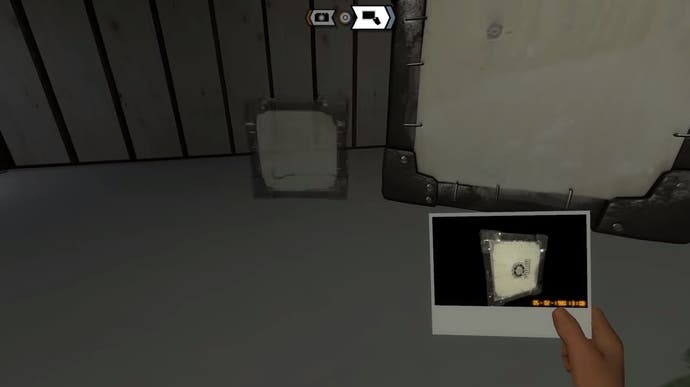Over a decade later, we have a snapshot of Valve's cancelled Portal sequel, F-Stop
Aperture Camera.
Over a decade since it was cancelled, Valve's unreleased Portal prequel, F-Stop has been revived via an unusual source: an indie developer.
F-Stop, which began life as a Valve experiment before it was set to be the next Portal game following the release of the Orange Box in 2007, revolved around taking pictures in the game world, with the pictures then used to create in-game objects. Portals and the Portal gun were nowhere to be seen.
F-Stop was eventually canned and Valve went on to release Portal 2 in April 2011. Gameplay of F-Stop was never officially released, with Valve keeping its cards close to its chest in case it fancied returning to the in-game camera mechanic. But now, over a decade later, an indie developer has said it has permission from Valve itself to show off the F-Stop mechanic using F-Stop's source code - and it released a video revealing how it all works.
Developers Tristan Halcomb and Graham Dianaty, aka LunchHouse Software, released the first video in a planned series called Exposure that shows off the camera mechanic at the heart of F-Stop, or, as it was properly called, Aperture Camera. LunchHouse, which has a Source Engine licence, was given permission to do this from Valve itself, the indie studio said.
The video shows the player taking pictures of cubes, producing polaroids. The polaroids are then used to spawn cubes of various sizes in the play area. The player then takes a snap of a red balloon and uses it to attach two balloons to a cube, which flies up into the air.
Finally, a picture of a ceiling fan is taken and used to place a fan on the floor, which the player then uses to boost into the air and land on a higher level.
It's a short gameplay demo, but Exposure gives us an idea of what F-Stop was meant to be. And it also looks a lot like an actual video game that recently came out: Pillow Castle's Superliminal. Perhaps, given Superliminal's existence, Valve has decided there's no point keeping F-Stop's secret mechanic secret any longer, and so has given LunchHouse its blessing.
It's an odd way for a cancelled video game's mechanic to be revealed to the world - particularly one created by such a high-profile developer. How did LunchHouse obtain the F-Stop source code in the first place? LunchHouse's Tristan Halcomb can't say, according to a tweet:
The next obvious question is: is Exposure meant to be a video game based on the F-Stop source code? It looks like it, based on LunchHouse's video, but Halcomb insists it's a video series for now. Perhaps Valve will give Exposure the greenlight as a Steam game in the future.
As for HouseLunch, it's working on an upcoming physics based puzzle game of its own called Punt, which is built using Valve's Source Engine.



